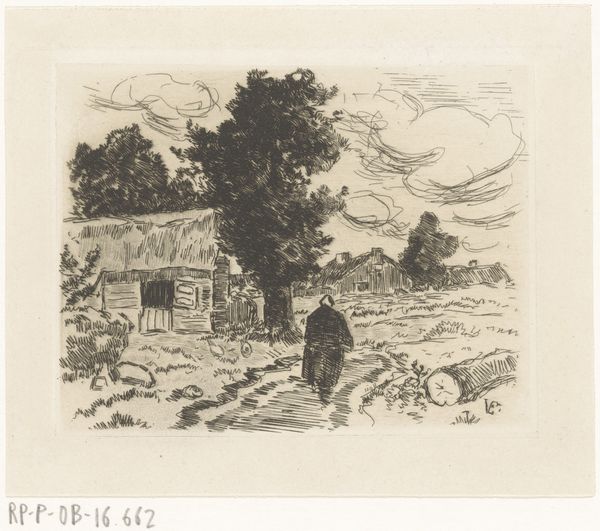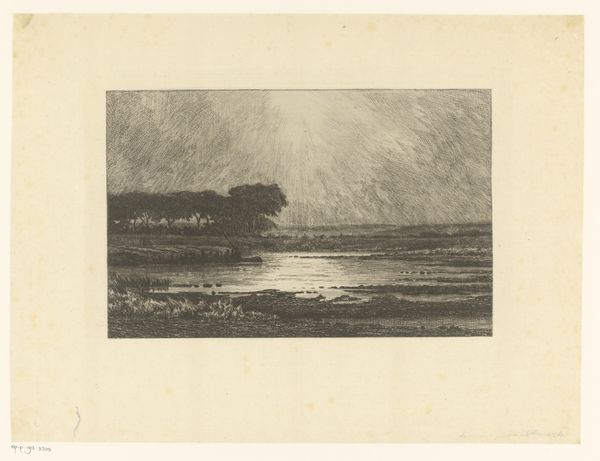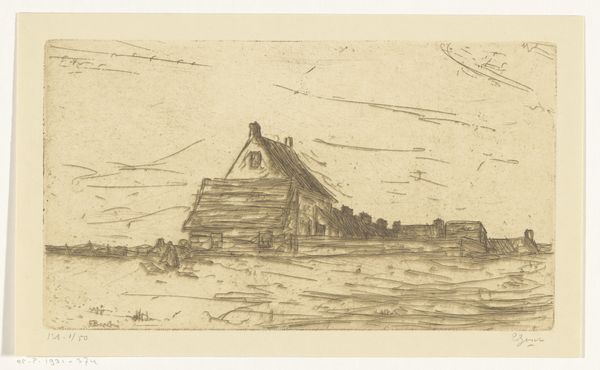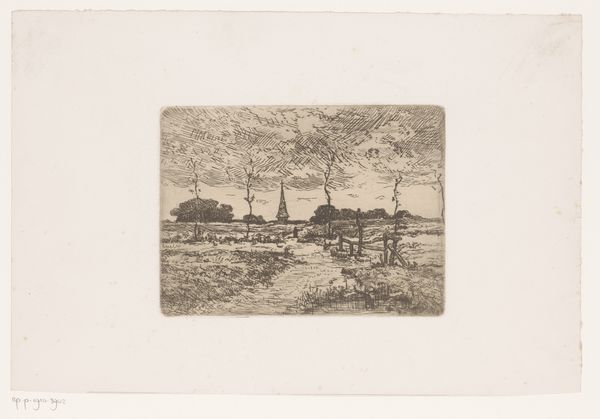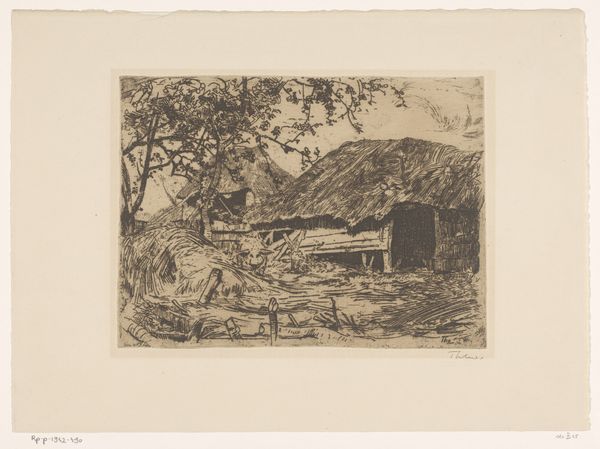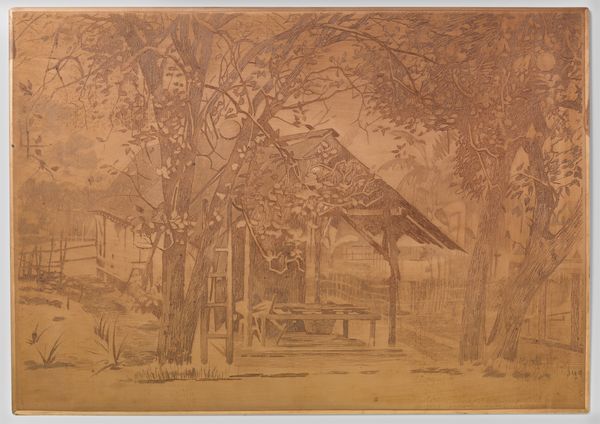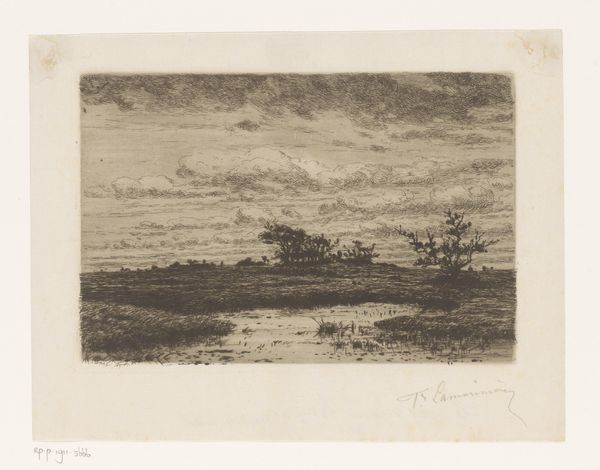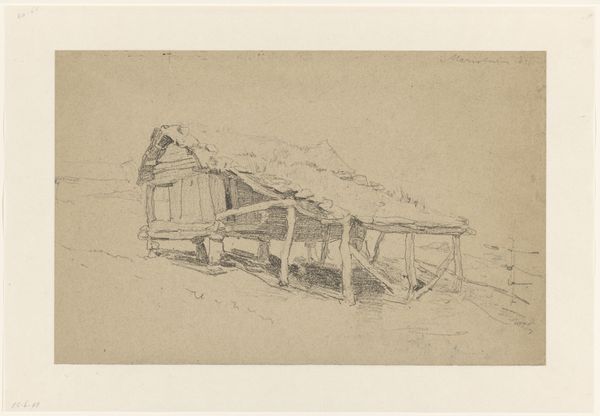
Dimensions: plate: 23.5 × 36.7 cm (9 1/4 × 14 7/16 in.) sheet: 30.1 × 41.7 cm (11 7/8 × 16 7/16 in.)
Copyright: National Gallery of Art: CC0 1.0
Emil Orlik made this woodcut, titled "Evening in Fukagawa", in the early 20th century. It shows a night scene in Fukagawa, Tokyo, with traditional Japanese houses. Orlik was a Czech artist who travelled to Japan and became fascinated by the country’s culture. He became skilled in the woodcut technique, a traditional Japanese art form. This print reflects the Japonisme movement of the late 19th and early 20th centuries. It was when Western artists were greatly influenced by Japanese art and design. We see this in Orlik’s use of a muted color palette, flattened perspective, and emphasis on nature. But Orlik wasn’t just copying Japanese art. He was also engaging with the social realities of his time, when increased cultural exchange between East and West took place. It's important to consider the history of Orientalism and imperialism, and how it influenced the way Western artists like Orlik represented non-Western cultures. To fully understand this artwork, we need to consider not only its aesthetic qualities, but also the broader social and political context in which it was made.
Comments
No comments
Be the first to comment and join the conversation on the ultimate creative platform.


